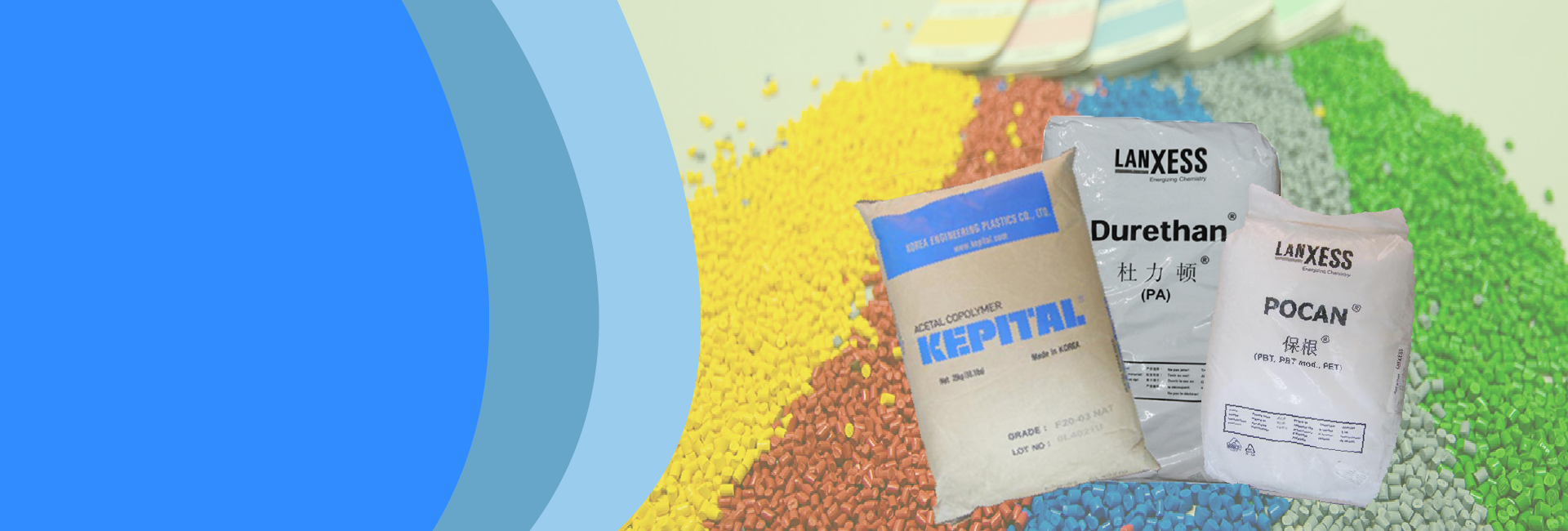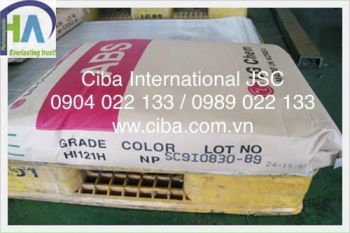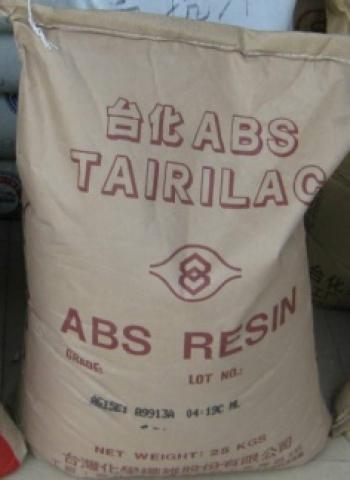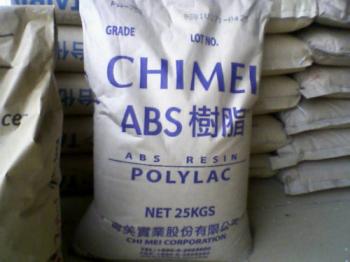Nhựa ABS Terluran GP-22, Ineos Styrolution
Đóng gói: 25kg/bao
Hãng sản xuất: Ineos Styrolution
Xuất xứ: Hàn Quốc
Hàng có sẵn




Terluran GP-22
Acrylonitrile Butadiene Styrene (ABS)
APPLICATIONS
Injection molding
Appliance housings
Household and sanitary appliances
Toys
Automotive components
FEATURES
Excellent colorability
Medium flow
Good impact resistance
Good heat distortion resistance
High quality surface finish and gloss
Technical Datasheet
DESCRIPTION
Terluran GP-22 is an easy-flow, general purpose injection molding grade with high resistance to impact and heat distortion; intended for a
wide range of applications, particularly in the housings sector.
| Property, Test Condition | Standard | Unit | Values |
Rheological Properties
| Melt Volume Rate 220 °C/10 kg | ISO 1133 | cm³/10 min | 19 |
Mechanical Properties
| Izod Notched Impact Strength, 23 °C | ISO 180/A | kJ/m² | 26 |
| Izod Notched Impact Strength, -30 °C | ISO 180/A | kJ/m² | 8 |
| Charpy Notched Impact Strength, 23° C | ISO 179 | kJ/m² | 22 |
| Charpy Notched Impact Strength, -30° C | ISO 179 | kJ/m² | 8 |
| Charpy Unnotched, 23° C | ISO 179 | kJ/m² | 180 |
| Charpy Unnotched, -30° C | ISO 179 | kJ/m² | 100 |
| Tensile Stress at Yield, 23° C | ISO 527 | MPa | 45 |
| Tensile Strain at Yield, 23° C | ISO 527 | % | 2.6 |
| Tensile Modulus | ISO 527 | MPa | 2300 |
| Nominal Strain at Break, 23 °C | ISO 527 | % | 10 |
| Flexural Strength | ISO 178 | MPa | 65 |
| Hardness, Ball Indentation | ISO 2039-1 | MPa | 97 |
Thermal Properties
| Vicat Softening Temperature VST/B/50 (50°C/h, 50N) | ISO 306 | °C | 96 |
| Vicat Softening Temperature, VST/A/50 (50°C/h, 10N) | ISO 306 | °C | 105 |
| Property, Test Condition | Standard | Unit | Values |
| Heat Deflection Temperature A; (annealed, 1.8 MPa) | ISO 75 | °C | 94 |
| Heat Deflection Temperature B; (annealed, 0.45 MPa) | ISO 75 | °C | 99 |
| Coefficient of Linear Thermal Expansion | ISO 11359 | 10^(-6)/°C | 80 - 110 |
| Thermal Conductivity | DIN 52612-1 | W/(m K) | 0.17 |
Electrical Properties
| Dissipation Factor (100 Hz) | IEC 60250 | - | 48E-4 |
| Dissipation Factor (1 MHz) | IEC 60250 | - | 79E-4 |
| Relative Permittivity (100 Hz) | IEC 60250 | - | 2.9 |
| Relative Permittivity (1 MHz) | IEC 60250 | - | 2.8 |
| Volume Resistivity | IEC 60093 | Ohm*m | 1E13 |
| Surface Resistivity | IEC 60093 | Ohm | 1E13 |
Other Properties
| Density | ISO 1183 | kg/m³ | 1040 |
| Water Absorption, Saturated at 23°C | ISO 62 | % | 1 |
| Moisture Absorption, Equilibrium 23°C/50% RH | ISO 62 | % | 0.22 |
| Yellowness Index | DIN 6167 | - | 13 |
Processing
| Linear Mold Shrinkage | ISO 294-4 | % | 0.4 - 0.7 |
| Melt Temperature Range | ISO 294 | °C | 220 - 260 |
| Mold Temperature Range | ISO 294 | °C | 30 - 60 |
| Injection Velocity | ISO 294 | mm/s | 200 |
| Drying Temperature | °C | 80 | |
| Drying Time | h | 2 - 4 |
Typical values for uncolored products
SUPPLY FORM
Terluran® is delivered as spherical pellets. The bulk density of the pellets is from 0.55 to 0.65 g/cm³. Standard Packaging unit: 25 kg PE-bag
on palette, shrunk or wrapped with PE film or delivery in silo trucks. PE bags should not be stored outside. In dry areas with normal
temperature control, Terluran pellets can be stored for relatively long periods of time without any change in mechanical properties. Under poor
storage conditions, Terluran absorbs moisture, but this can be removed by drying.
PRODUCT SAFETY
No adverse effects on the health of processing personnel have been observed if the products are correctly processed and the production
areas are suitably ventilated. For styrene, acrylonitrile and 1,3-butadiene the maximum allowable workplace concentrations must be observed
according to the pertaining national regulations. In Germany, the following limit values are valid (Oct. 2002): styrene, MAK-value: 20 ml/m³ =
86 mg/m³; acrylonitrile, TRK-value: 3 ml/m³ = 7 mg/m³ and 1,3-butadiene, TRK-value: 5 ml/m³ = 11 mg/m³. According to EU directive
67/548/EWG, Annex I and TRGS 905 (Oct. 2002), acrylonitrile and 1,3-butadiene are classified as carcinogenic, category 2 (´substances
which should be regarded as if they are carcinogenic to man´) and 1 (substances known to be carcinogenic to man), respectively. Experience
has shown that during appropriate processing of Terluran with suitable ventilation the values obtained are well below the limits mentioned
above. TRGS 402 (Germany) can be used for determining and assessing the concentrations of hazardous substances in the air within
working areas. Inhalation of gaseous degradation products, such as those which may arise on severe overheating of the material or during
pumped evacuation, must be avoided. Further information can be found in our Terluran safety data sheets.
DISCLAIMER
The above information is provided in good faith. Styrolution is not responsible for any processing or compounding which may occur to product
finished articles, packaging materials or their components. Further, Styrolution MAKES NO WARRANTY OR REPRESENTATION OF ANY
KIND, REGARDING THE INFORMATION GIVEN OR THE PRODUCTS DESCRIBED, AND EXPRESSLY DISCLAIMS ALL IMPLIED
WARRANTIES, REPRESENTATIONS AND CONDITIONS, INCLUDING WITHOUT LIMITATION ALL WARRANTIES AND CONDITIONS OF
QUALITY, MERCHANTABILITY AND SUITABILITY OR FITNESS FOR A PARTICULAR PURPOSE. Responsibility for use, storage, handling
and disposal of the products described herein is that of the purchaser or end user.









